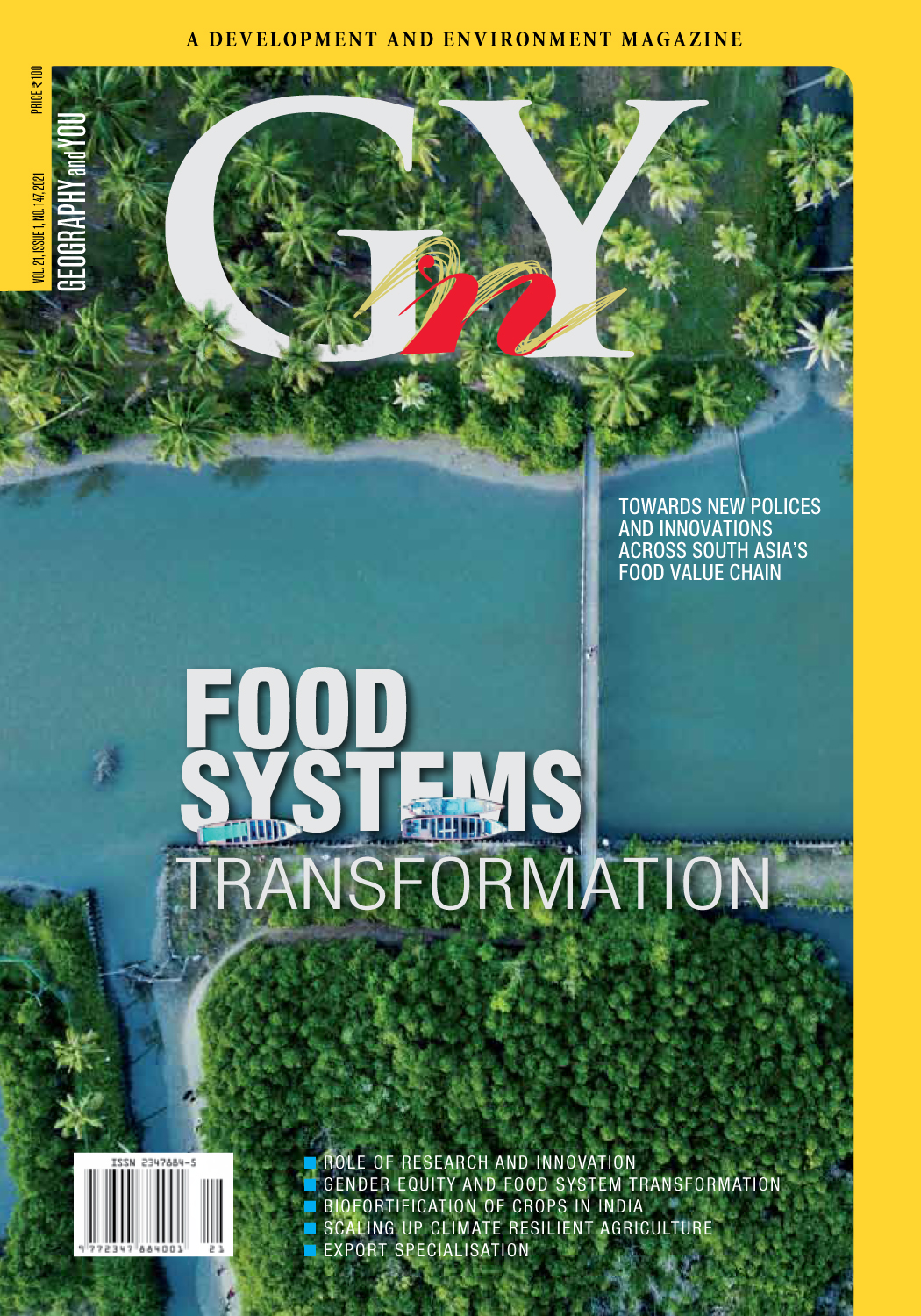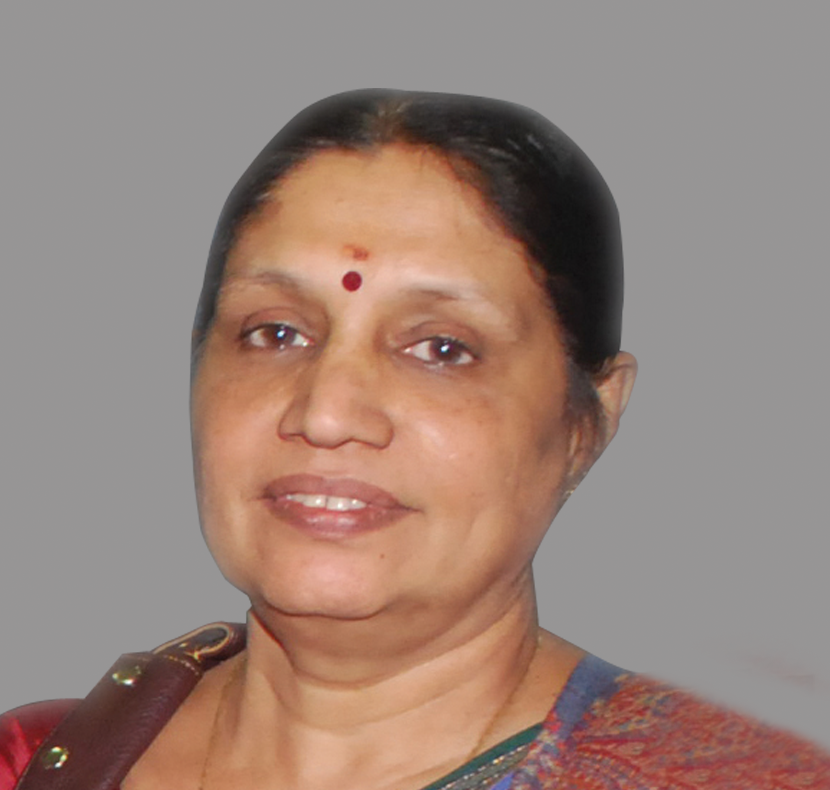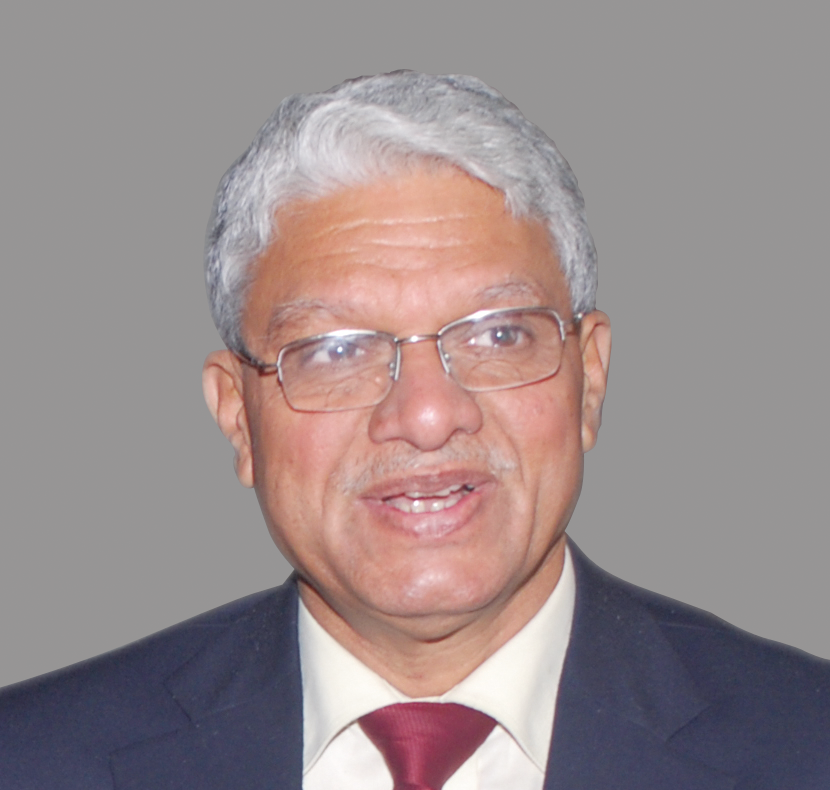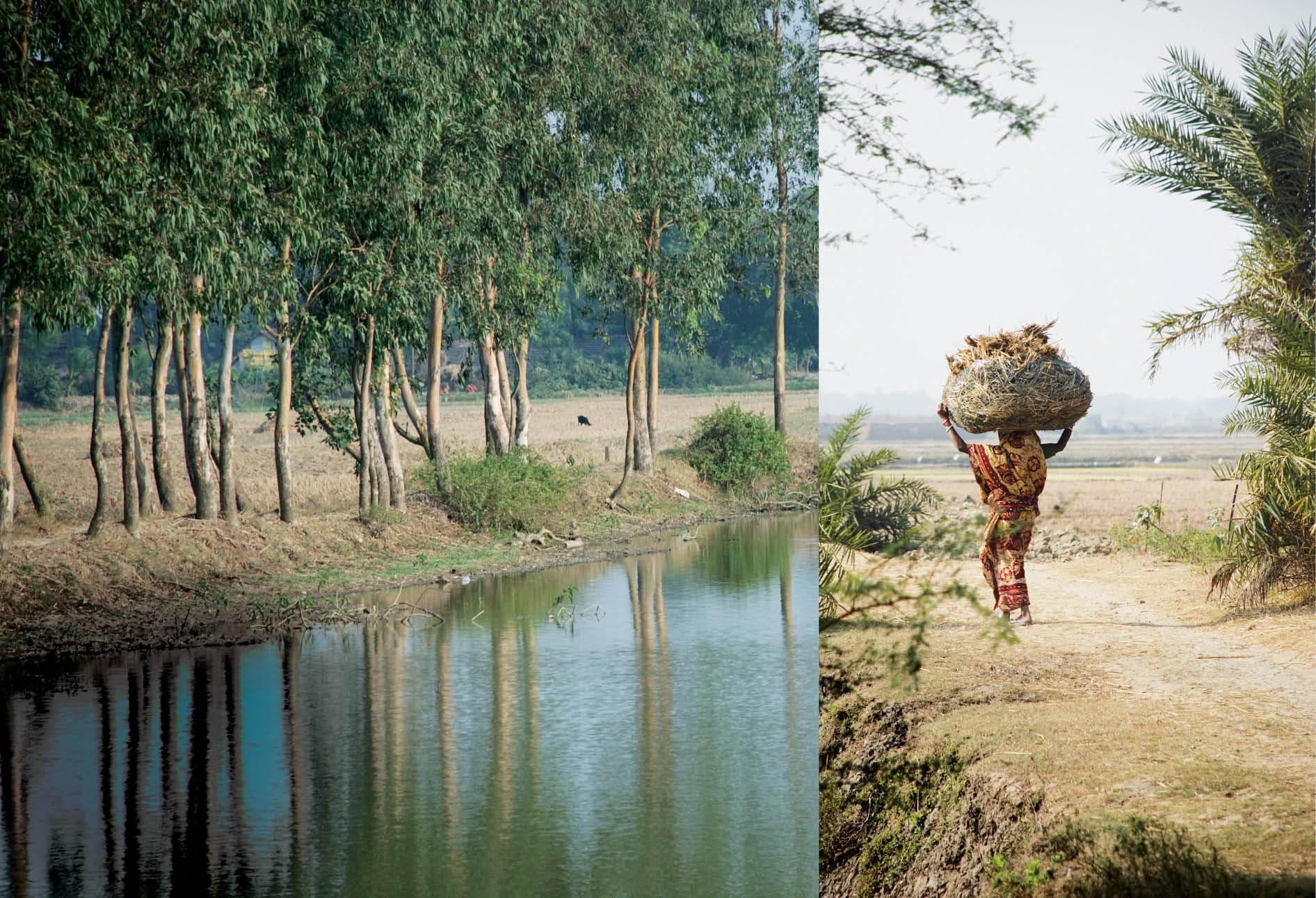
Expert Panel

Raja Ramanna Chair Professor, National Institute of Advanced Studies (NIAS), Bangalore

Former Professor, Jawaharlal Nehru University, New Delhi

Former Chairperson, National Biodiversity Authority, Chennai.

Geologist and Secretary General, 36 IGC, New Delhi.

Prof Emeritus, Alfred Wegener Institute for Polar & Marine Research, Germany

Former Director General, India Meteorological Department (IMD), New Delhi.

Former Professor, CSRD, Jawaharlal Nehru University, New Delhi.

Air Vice Marshal (Retd) Former DG, India Meteorological Department (IMD), New Delhi
Inside this issue
Rebuilding food systems
Food systems are at the heart of the United Nations’ 2030 Agenda for Sustainable Development. However, the current food system in South Asia is dysfunctional and needs transformation to deliver benefits to people and the planet. Achieving this requires both an evidence base for radical new policies and the adoption of innovations across the food value chain at scale.
Farmers need support to adapt to the changing climate in South Asia, which has been adversely affecting agricultural production year after year. Extension and advisory services (EAS) can play a critical role in scaling up climate-resilient agriculture. However, their capacities to support farmers in adapting to climate change need to be substantially enhanced.
Women’s contribution is immense throughout the rapidly transforming food systems—right from production to providing nutrition. Existing research suggests that inequity within the food systems operates through differentiated access to land, labour, capital, information and technology between men and women. As a way forward, several strategies such as providing access to land, extension services and group membership to reduce inequities within the food systems is suggested, with nuanced context-based research and gender-specific metrics in policy and programme designs.
Malnutrition, caused by inadequate intake of balanced food, affects people of all ages including infants, children, adults, women and old-age people. Biofortification is a process of developing nutrient-rich crops through breeding approaches that provide sustainable and cost-effective solutions to alleviate malnutrition. The National Agricultural Research System (NARS) led by the Indian Council of Agricultural Research (ICAR) has developed a series of biofortified crop varieties through breeding methods that have a balanced concentration of nutrients, are high yielding and ideal for meeting the country's food and nutritional security. Here, we discuss available biofortified crop cultivars for cultivation, effects of biofortified crops on human health and various challenges for the popularisation of these nutritionally rich crops cultivars in India.
Unsafe food does not nourish, it harms. Food cannot be considered nutritious if it is not safe. Harmful effects of unsafe food would make it impossible to achieve desired nutrition objectives. Thus, food, if not safe, is not food. While this argument may seem straightforward, given the paucity of evidence and data on foodborne illnesses, food safety receives little attention. It only comes into focus during major outbreaks of foodborne diseases (FBD) causing death, scandals involving deliberate food adulteration, trade bans or widespread consignment rejection due to noncompliance to standards of importing countries. The fact is food safety is a serious public health concern and is central to building a nation’s health.
This paper examines whether export specialisation is a catalyst for agricultural transformation in India. Analysis has shown that India’s export of agricultural products has increased from 1.35 per cent in 2001 to 2.61 in 2019 and there is a significant agricultural trade surplus generated over time. Two products—rice and crustaceans accounted for nearly one-third of export value in 2017-2019 with a little change in export composition. Export specialisation indices broadly confirm these patterns. Results indicate that agricultural transformation led by export specialisation will remain stunted in the near future. The policy should aim at diversification of agricultural export basket through product-specific focus, based on export demand and exploration of new markets.
Non-bovine milk can play a key role in achieving the UN 2030 Agenda for sustainable development and its 17 inter-related Sustainable Development Goals (SDGs) in South Asia. Milk from goat, camel and yak provides nutritional security in disadvantaged geographical regions and traditional non-bovine milk products contribute towards the management of chronic diseases. Significantly, South Asia leads in the production of goat milk, marking its cultural acceptance. Non-bovine milk offers diverse nutritional components that need to be analysed for future nutraceutical development and for the formulation of health products.
In conversation with
Prof Ramesh Chand, Member, NITI Ayog, speaking with Sulagna Chattopadhyay, discusses a vision of how India’s agriculture needs to transform with proactive as well as stringent regulations.
Prof Saleemul Huq, Director, International Centre for Climate Change and Development, Independent University, Bangladesh, Dhaka and lead author of IPCC Sixth Assessment Report speaking with Sulagna Chattopadhyay shares a vision of how climate change provides multiple opportunities for adaptation and ushers in an era of new thinking.
In brief
A first-ever initiative by the United Nations (UN), a Food Systems Summit is being convened in September 2021 in an attempt to launch ‘bold new actions’ that delivers progress on 17 Sustainable Development Goals by 2030. Looking to usher in healthier, more sustainable and equitable food systems,
To think differently Agriculture, even today, is central to India as indeed to the economy of South Asia. However, the sector’s increasing ecological footprint on natural resources, extreme dependence on a limited food basket and issues related to nutrient loading, pollution and food safety are r
Transforming South Asia’s Food Systems Food systems are at the heart of the 2030 Agenda for Sustainable Development because they engage food security and human nutrition, ecosystem services, climate change mitigation and adaptation and rural prosperity. However, the current food system in South A

